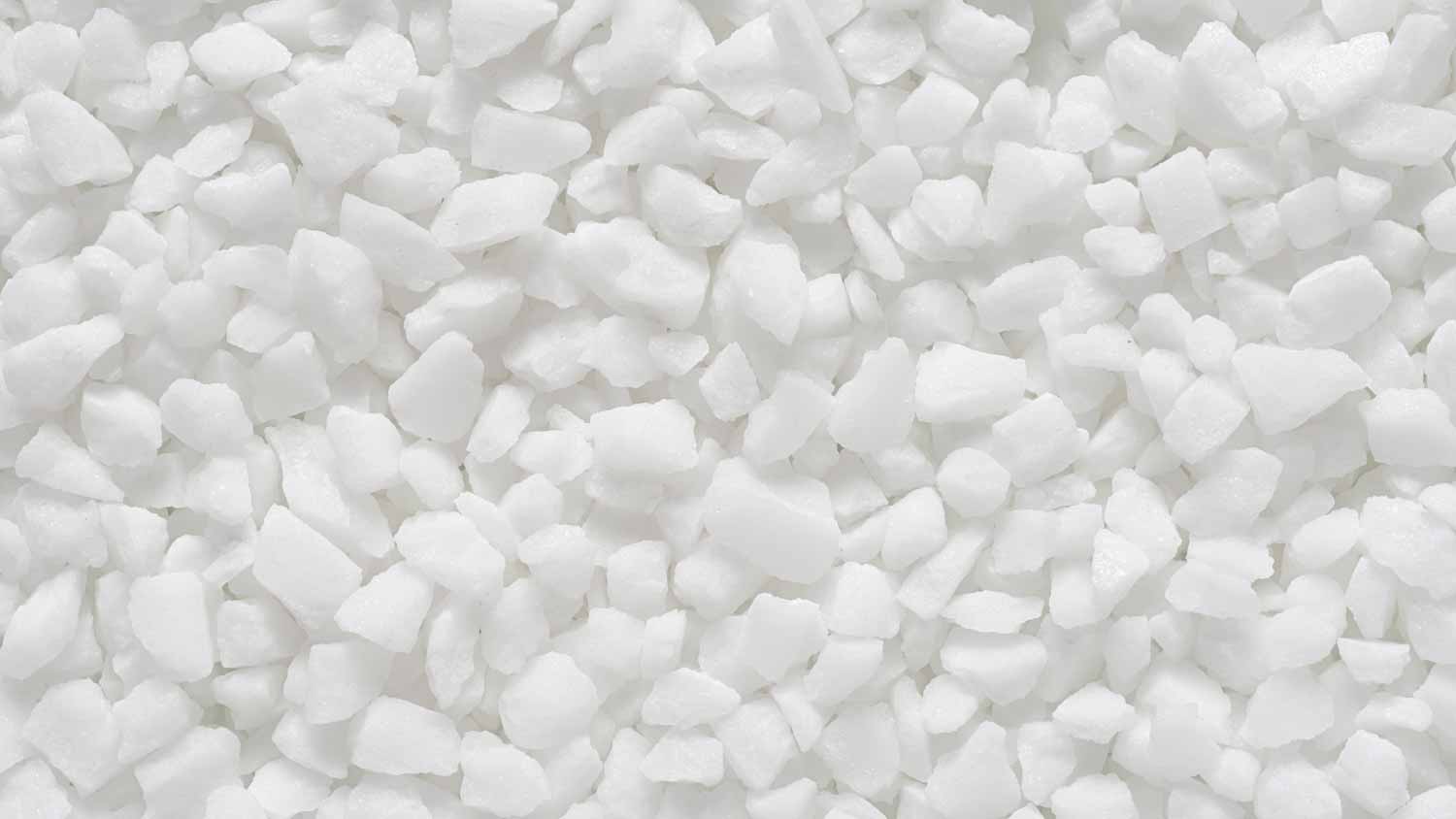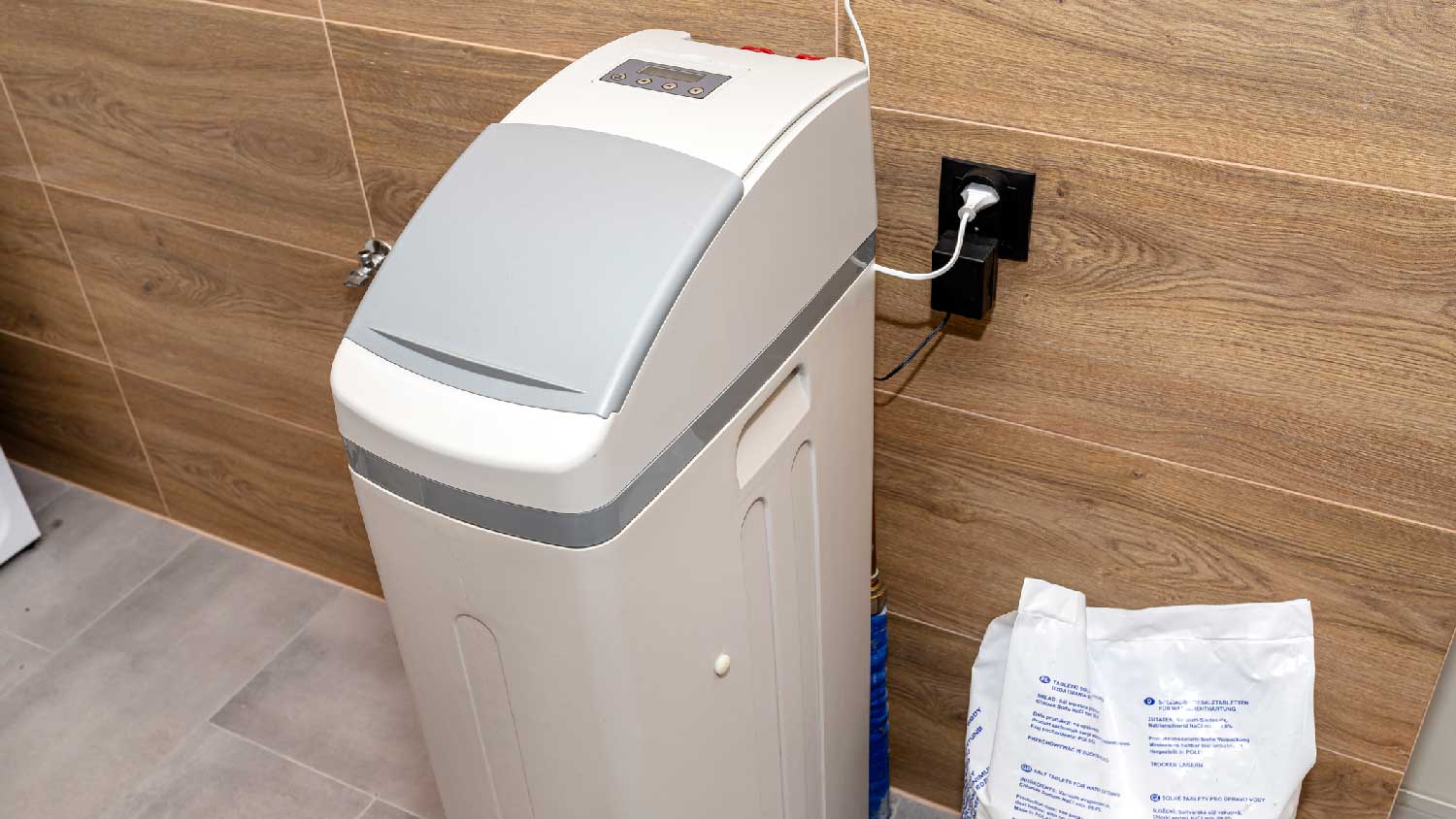Water Softener Crystals vs. Pellets: Which Solution Is Best for You?
You need an easy solution to a hard problem


Water softener crystals dissolve quickly and are ideal for older, gravity-fed systems.
Pellets dissolve more slowly, giving longer-lasting water softening capabilities.
Pellets cost more than crystals, but pellets are ideal for homes with larger water needs.
Crystals have additives, leading to more issues than pellets with bridging and mushing.
There are two popular water softener salts to consider, but which is best suited for your needs between water softener crystals versus pellets? Hard water can cause a ton of issues, from scaling in your pipes to reducing the efficiency of your appliances. When it comes to maintaining the quality of water in your home, choosing the right water softening solution is essential.
Water Softener Crystals vs. Pellets: Key Differences

Water softener crystals and pellets both serve the purpose of removing minerals from your water that cause water hardness, but they differ in composition and application. Crystals are composed of evaporated salt and are known for their ability to dissolve quickly, whereas pellets are compressed salt forms that dissolve more slowly. Understanding these differences can help you pick the best option for your needs.
What Are Water Softener Crystals?
Water softener crystals are small, evaporated salt granules used to soften hard water. They dissolve quickly in water softening systems, replacing calcium and magnesium ions with sodium ions to stop scale buildup in your pipes and appliances. Crystals are a cost-friendly softening solution.
| Pros | Cons |
|---|---|
| Quickly dissolve | Salt bridging |
| Lower-cost | Potential mushing |
| Widely available | Higher maintenance |
Best for:
Homes with low water usage
Households on a budget
Older systems and gravity-fed systems
Pros of Water Softener Crystals
One of the biggest advantages of crystals is their quick-dissolving nature. This makes them ideal for water softening systems that are gravity-fed and a bit older. Additionally, these crystals are more cost-friendly compared to pellets, making them a great solution for anyone looking to soften their water without breaking the bank. Plus, you can easily find them in most home improvement stores, so refills will be a breeze.
Cons of Water Softener Crystals
One drawback to crystals is salt bridging, which is where a hard crust forms in the brine tank, preventing the salt from dissolving properly. This means that you’ll need to clean the tank more often. Additionally, crystals are prone to mushing, or forming a thick sludge at the bottom of the tank, which can cause problems that may lead to you paying more in water softener repair costs over time.
What Are Water Softener Pellets?
Water softener pellets are compressed salt. They dissolve slowly, providing a consistent softening effect over time, so they’re great for high-water-usage systems. Pellets replace calcium and magnesium ions with sodium chloride or potassium chloride, in some cases. This prevents scale buildup in pipes and appliances and leads to less maintenance.
| Pros | Cons |
|---|---|
| Slow dissolving | Limited availability |
| Less bridging | Higher cost |
| Less maintenance | Not good for older systems |
Best for:
Homes with high water usage
Households seeking low-maintenance options
Systems that require stable softening performance
Pros of Water Softener Pellets
The slow-dissolving nature of water softener pellets ensures a steady and consistent softening process, making them ideal for homes with higher water usage. Pellets are also less prone to issues like salt bridging and mushing, so you’ll spend less time on maintenance. This can save you time and money in the long run because the system requires fewer cleanings and repairs.
Cons of Water Softener Pellets
However, water softener pellets are more expensive than crystals, which is important for homes on a budget. They are also less widely available, meaning you may need to visit specialized stores or order them online. Additionally, pellets are less likely to cause bridging or mushing, but they can still clump together under certain conditions (though this is less common in pellets compared to crystals).
DIY vs. Hiring a Pro for Tub-to-Shower Conversion
Replacing a tub with a shower yourself can save you $1,000 or more off the cost of converting a tub to a walk-in shower. On top of this, many hardware stores sell shower stall kits that come with most things needed for installation, minus basic tools and necessities like a power drill, level, and caulk. This means you can install your own shower for as little as $1,200. If you’d like to install a tiled shower, you can DIY starting at about $2,150.
However, these budgets don’t cover the cost of removing your old tub and hauling it away. They also don’t include the cost of cleanup and finishing touches, like painting walls. Should you run into a problem with plumbing, such as a broken pipe or the need to move an existing drain, it may cost less to hire a shower installer near you.
“There’s a high likelihood of an untrained homeowner installing a drain incorrectly and causing a backup of sewer gases into the home,” says Jeff Botelho, Expert Review Board member and licensed journeyman plumber. Having an experienced pro complete the job to code and safely cannot be overstated.

Both water softener crystals and pellets have unique advantages and drawbacks. While they both effectively soften hard water, the right one for you depends on your water usage, budget, and maintenance preferences. If you need more advice for a unique situation, a local water softener installation company would be happy to help, and they can install a new system or handle repairs, if needed.
Purity: Pellets
While both crystals and pellets are effective at softening water, pellets have fewer additives and dissolve more cleanly. This means that there will be fewer impurities introduced into your water system. So, pellets are a preferable choice for households that prioritize water quality.
Longevity: Pellets
Water softener pellets dissolve more slowly than crystals, so their softening capabilities last longer. This ensures a consistent supply of softened water and means that you don’t need to refill the salt as often. For homes with high water usage, this longevity can be a significant advantage, providing continuous water softening without constant monitoring.
Cost: Crystals
Water softener crystals are the lower-cost option. They are not as pricey to purchase and are easier to find, making them a solid choice for many households. Crystals can sometimes be half the price of pellets, depending on where you buy them from.
Maintenance Needs: Pellets
Due to the additives in water softener crystals, they are more likely to cause issues like salt bridging and mushing in the brine tank. These issues can lead to more frequent maintenance and potential repairs, adding to the overall maintenance cost and effort. Pellets have higher purity and dissolve slower, so they require less maintenance, making them a more convenient option for busy households.
Ease of Use: Pellets
Water softener pellets come ready-to-use right out of the bag, so they’re easier to handle and less messy compared to crystals. Pellets are also more straightforward to store thanks to their compact size and uniform shape. Crystals, on the other hand, are bulkier and may need to be ground down before use, adding an additional, messy step to the water softening process.





- 11 Essential Water Softener Maintenance Tips
- Water Softener Rental vs. Buying: What You Should Know to Help You Decide
- 7 Common Water Softener Problems (and How to Fix Them)
- When to Schedule Water Softener Repair vs. Buying a Replacement
- 7 Water Softener Salt Types to Consider
- What Is Water Softener Salt? Cost, Types, and Everything You Need to Know
- How Do You Program the Different Settings on a Water Softener?
- 4 Types of Water Softeners and How to Choose the Right One
- Is Your Water Softener Turning Water Gray? 6 Possible Causes and How to Stop It
- Why Is My Water Softener Leaking? 8 Common Reasons










